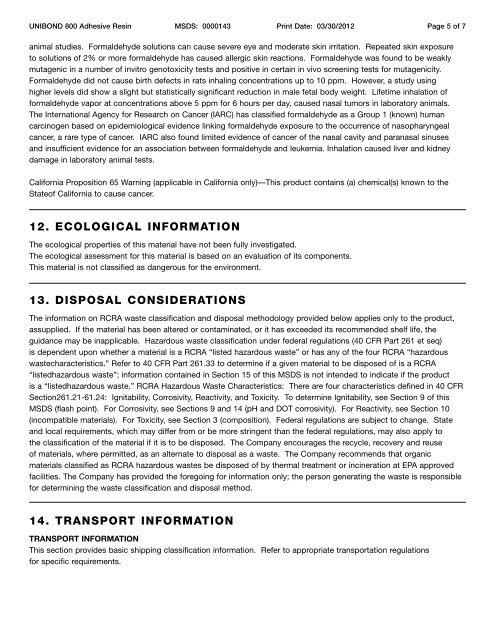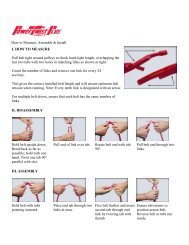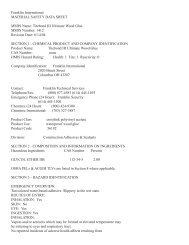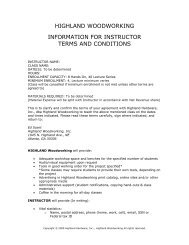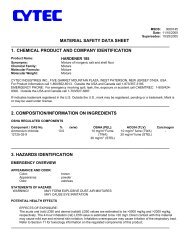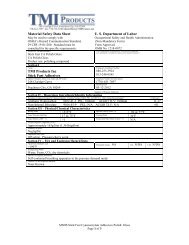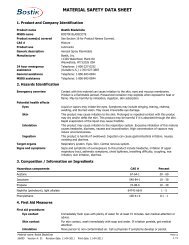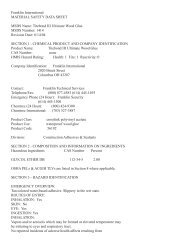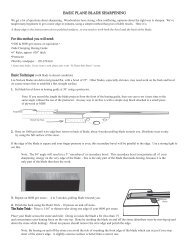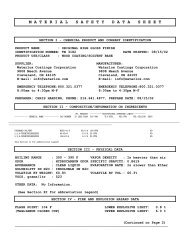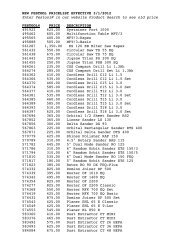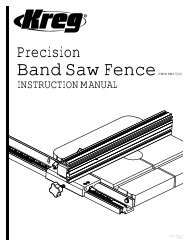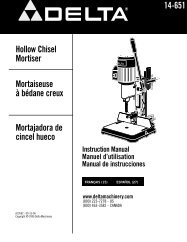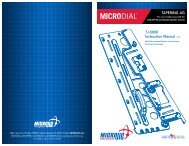Unibond 800 - Highland Woodworking
Unibond 800 - Highland Woodworking
Unibond 800 - Highland Woodworking
You also want an ePaper? Increase the reach of your titles
YUMPU automatically turns print PDFs into web optimized ePapers that Google loves.
UNIBOND <strong>800</strong> Adhesive Resin MSDS: 0000143 Print Date: 03/30/2012 Page 5 of 7<br />
animal studies. Formaldehyde solutions can cause severe eye and moderate skin irritation. Repeated skin exposure<br />
to solutions of 2% or more formaldehyde has caused allergic skin reactions. Formaldehyde was found to be weakly<br />
mutagenic in a number of invitro genotoxicity tests and positive in certain in vivo screening tests for mutagenicity.<br />
Formaldehyde did not cause birth defects in rats inhaling concentrations up to 10 ppm. However, a study using<br />
higher levels did show a slight but statistically significant reduction in male fetal body weight. Lifetime inhalation of<br />
formaldehyde vapor at concentrations above 5 ppm for 6 hours per day, caused nasal tumors in laboratory animals.<br />
The International Agency for Research on Cancer (IARC) has classified formaldehyde as a Group 1 (known) human<br />
carcinogen based on epidemiological evidence linking formaldehyde exposure to the occurrence of nasopharyngeal<br />
cancer, a rare type of cancer. IARC also found limited evidence of cancer of the nasal cavity and paranasal sinuses<br />
and insufficient evidence for an association between formaldehyde and leukemia. Inhalation caused liver and kidney<br />
damage in laboratory animal tests.<br />
California Proposition 65 Warning (applicable in California only)—This product contains (a) chemical(s) known to the<br />
Stateof California to cause cancer.<br />
12. ECOLOGICAL INFORMATION<br />
The ecological properties of this material have not been fully investigated.<br />
The ecological assessment for this material is based on an evaluation of its components.<br />
This material is not classified as dangerous for the environment.<br />
13. DISPOSAL CONSIDERATIONS<br />
The information on RCRA waste classification and disposal methodology provided below applies only to the product,<br />
assupplied. If the material has been altered or contaminated, or it has exceeded its recommended shelf life, the<br />
guidance may be inapplicable. Hazardous waste classification under federal regulations (40 CFR Part 261 et seq)<br />
is dependent upon whether a material is a RCRA “listed hazardous waste” or has any of the four RCRA “hazardous<br />
wastecharacteristics.” Refer to 40 CFR Part 261.33 to determine if a given material to be disposed of is a RCRA<br />
“listedhazardous waste”; information contained in Section 15 of this MSDS is not intended to indicate if the product<br />
is a “listedhazardous waste.” RCRA Hazardous Waste Characteristics: There are four characteristics defined in 40 CFR<br />
Section261.21-61.24: Ignitability, Corrosivity, Reactivity, and Toxicity. To determine Ignitability, see Section 9 of this<br />
MSDS (flash point). For Corrosivity, see Sections 9 and 14 (pH and DOT corrosivity). For Reactivity, see Section 10<br />
(incompatible materials). For Toxicity, see Section 3 (composition). Federal regulations are subject to change. State<br />
and local requirements, which may differ from or be more stringent than the federal regulations, may also apply to<br />
the classification of the material if it is to be disposed. The Company encourages the recycle, recovery and reuse<br />
of materials, where permitted, as an alternate to disposal as a waste. The Company recommends that organic<br />
materials classified as RCRA hazardous wastes be disposed of by thermal treatment or incineration at EPA approved<br />
facilities. The Company has provided the foregoing for information only; the person generating the waste is responsible<br />
for determining the waste classification and disposal method.<br />
14. TRANSPORT INFORMATION<br />
TRANSPORT INFORMATION<br />
This section provides basic shipping classification information. Refer to appropriate transportation regulations<br />
for specific requirements.


